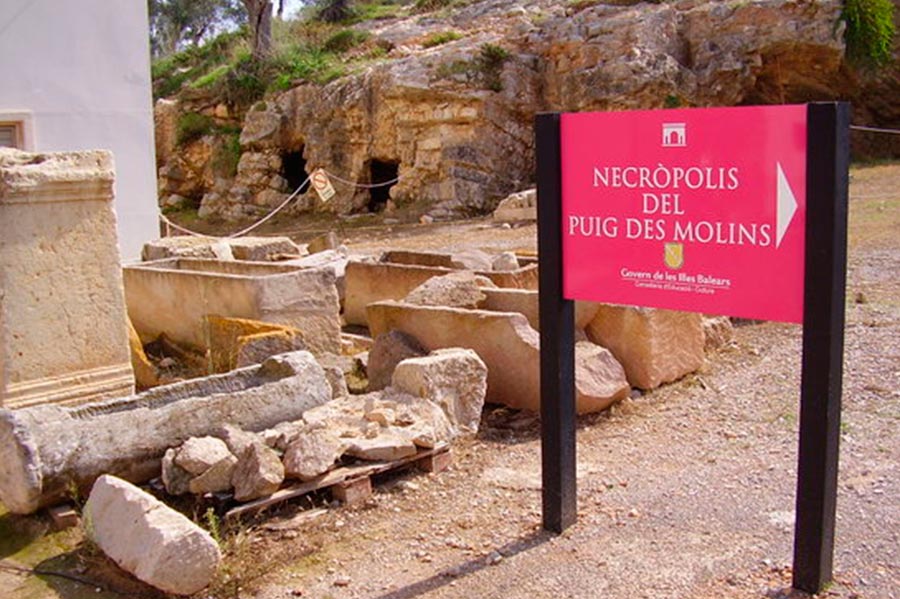
Ibiza is a fortress of tradition and culture. Its location has long made it a place of strategic importance for different peoples, each one leaving behind something original. Ibiza’s plethora of museums begin as explorations of the passage of the Phoenicians and span contemporary and avant-guard movements of our century.
A visit of the myriad collections is an exercise in time travel. Take the Museu d’Art Contemporani d’Eivissa, with the island’s premier picture gallery. Or check out the Diocesan Museum, which is distributed across the local cathedral’s chapter house and sacristy and boasts a vast collection of holy art from the Reconquista to modern times. Discover the island’s Muslim heritage at the Madina Yabisa Interpretive Centre, or contemplate its bucolic yesteryear at the Ethnographic Museum, set in a typical country home turned exhibition space at Can Ros, located in Santa Eulària des Riu’s Puig de Missa. For a true jewel, the island’s longest-standing museum Puig des Molins is also the one that covers the most history.
Museum of Puig des Molins
A designated World Heritage Site since 1999, the necropolis found in the Puig des Molins museum is the largest in the western Mediterranean. Nearby, the island’s museum of archaeology houses the unearthed treasures of numerous Ibiza digs. Both cast their gaze back to prehistory and the Muslim conquest. Their collections are key not only to understanding the island’s past, but to research and understanding of Phonecian-Punic culture worldwide.
The museum itself is spread across three stories and 1,514 square metres. On the first floor there is a permanent display exploring funeral rites in use on Ibiza for the fourteen centuries from the Phoenicians to the Byzantine era. The techniques employed in the burial of loved ones, the rituals and the materials found close by give insight into the thinking and lifestyles that dominated erstwhile Ibizan society. The interactive display, arrayed across five halls, each arranged by subject, gives visitors a sense of the 7th-century B.C. necropolis’s importance. Phoenicians typically buried their dead in places relatively close to their homes, which, at the time, were concentrated near present-day Puig de Vila, some 500 metres from Puig des Molins. The museum’s war chest—a total of 3,000 graves uncovered on a five-hectare swath of land—can be seen through different A.V. projections and models explaining the importance, then and now, of Ibiza’s necropolis.
The museums of Ibiza offer tales of yesterday, insight into today and even the occasional glimpse at tomorrow. Ibiza’s rich cultural heritage is featured across roughly twenty museums, each with a story to tell.



